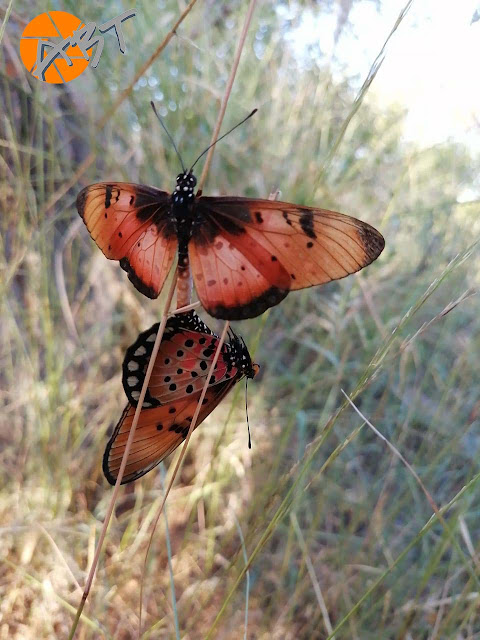The Natal Acraea (Acraea natalica) is a butterfly of the Nymphalidae family.

Learn more at https://abt-edu.com ©Estian Kruger Butterflies have a Holo-metabolic lifecycle and belong to the Order Lepidoptera. They undergo complete physical changes, i.e. insects undergo four developmetal stages, the embryo, larva, pupa, and adult. This is a meduim sized butterfly with a wingspan of about 59mm. Males are pinkish red , females are brownish red. Their wings are spotted with black and with black bases. Adults are on wing year round, with a strong peak in late summer in southern Africa. v What is the difference between a butterfly and a moth ? Butterflies ¨ Antennae are not feathery ¨ They don’t have wing-coupling apparatus ¨ Diurnal ¨ Pupa develop as a chrysalis ¨ Wings are held together vertically when at rest. Moths · Some have feathery antennae · They Have a wing-coupling apparatus · Nocturnal


